There are tons of reasons to visit Quebec City, Canada, and most of them revolve around the fact that this city will make you think you’re in Europe. Essentially, it’s a Europe you can drive to. It has everything you could ever want from a quaint French village without ever having to leave the ground. (Except for when you jump for joy after devouring your first crepe, that is.)
Thankfully, I live in Boston which is just a relatively short drive from Québec City so I get to visit as often as I want. I was so excited to first discover it many years ago and have made it a regular getaway since, and I’ve visited in all seasons.
If life-changing crepes didn’t convince you, here are 8 more reasons to visit Québec City when you’re feeling a little French vacay is in order (but your wallet disagrees).
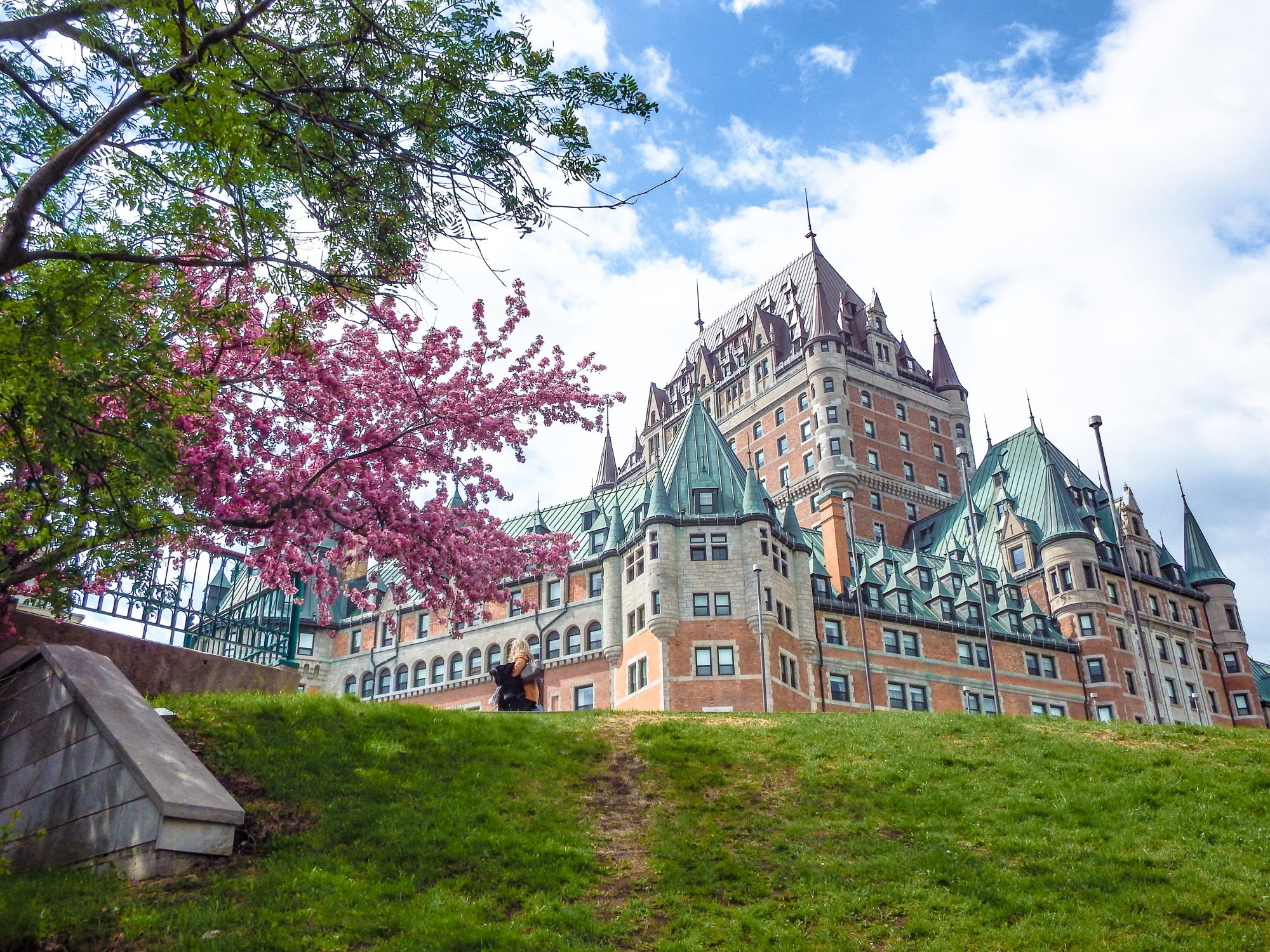
Looking to drive to Québec City? Check out the best rental car deals here.
1. If you like castles…
If you like castles and fancy French chateaux, you’ll love Québec City. Though not an actual fairytale castle, Québec City’s centerpiece is without a doubt the Fairmont Le Château Frontenac–the most photographed hotel in the world. (I account for about 45% of that probably.)
The Château Frontenac is a luxury hotel that opened in 1893. It was named after Louis de Buade, Count of Frontenac, a French soldier and the governor of the colony of New France. However, it was actually designed by Bruce Price, a man from Maryland. (An American designing a hotel to look like a swanky castle is really the only clue you aren’t actually in Europe.)
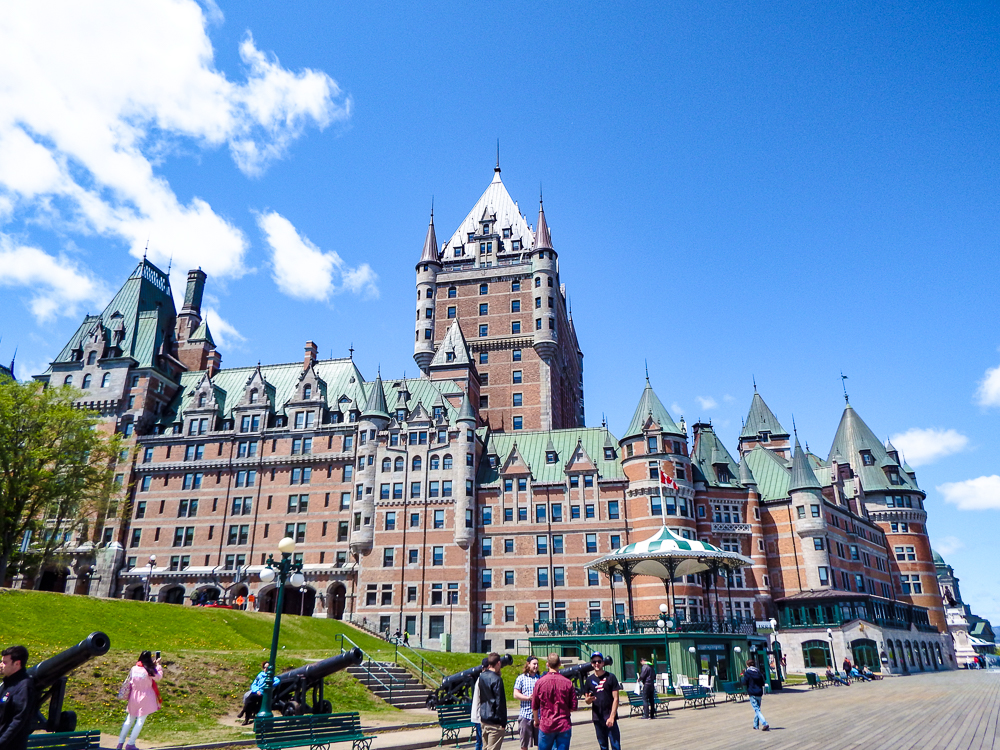
I’ve had the pleasure of staying here myself and it truly is one of the best reasons to visit Québec City! But you don’t need to be a guest to enjoy it. You’re free to enter and check out the grand architecture inside. There are also a couple of restaurants and bars that anyone can visit. The grounds are lovely and the views are the best in town.
If you can swing it, definitely consider staying at the Château Frontenac during your stay in Québec City. Would it help if I mentioned they have a Bernese Mountain Dog on staff to great you upon arrival? I thought it might.
Book your room at the Château Frontenac here
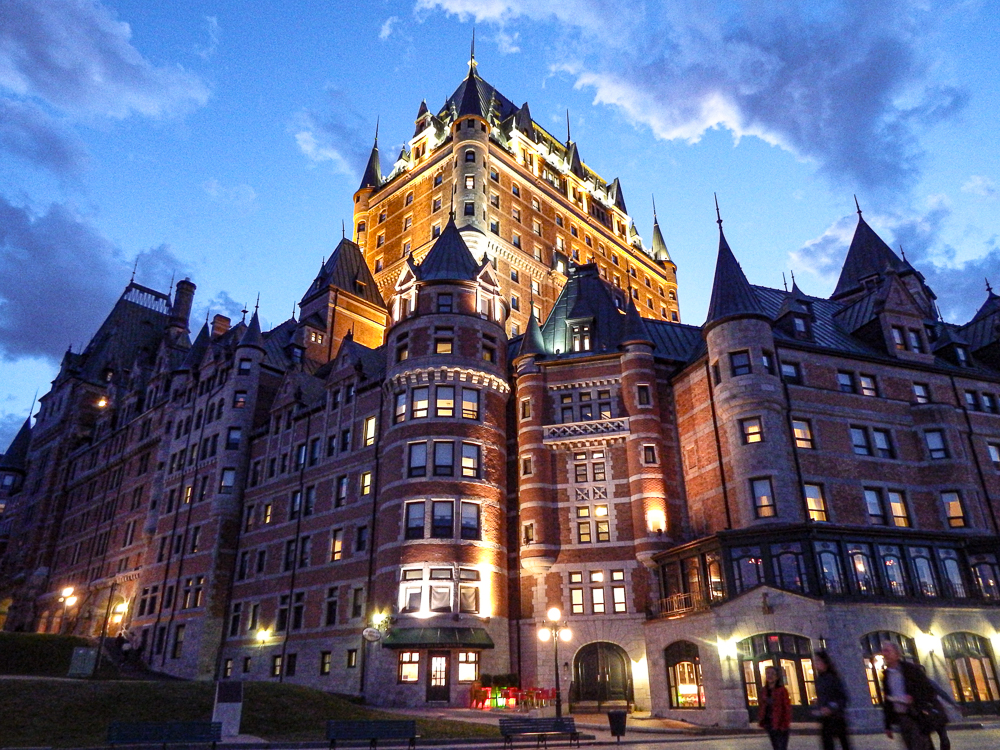
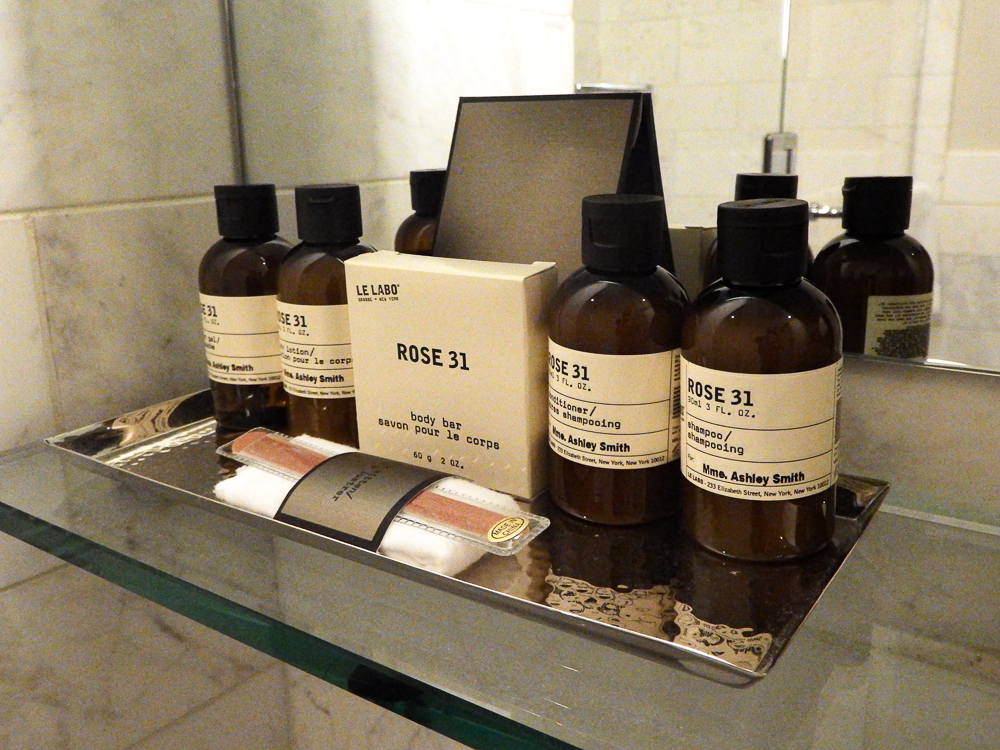
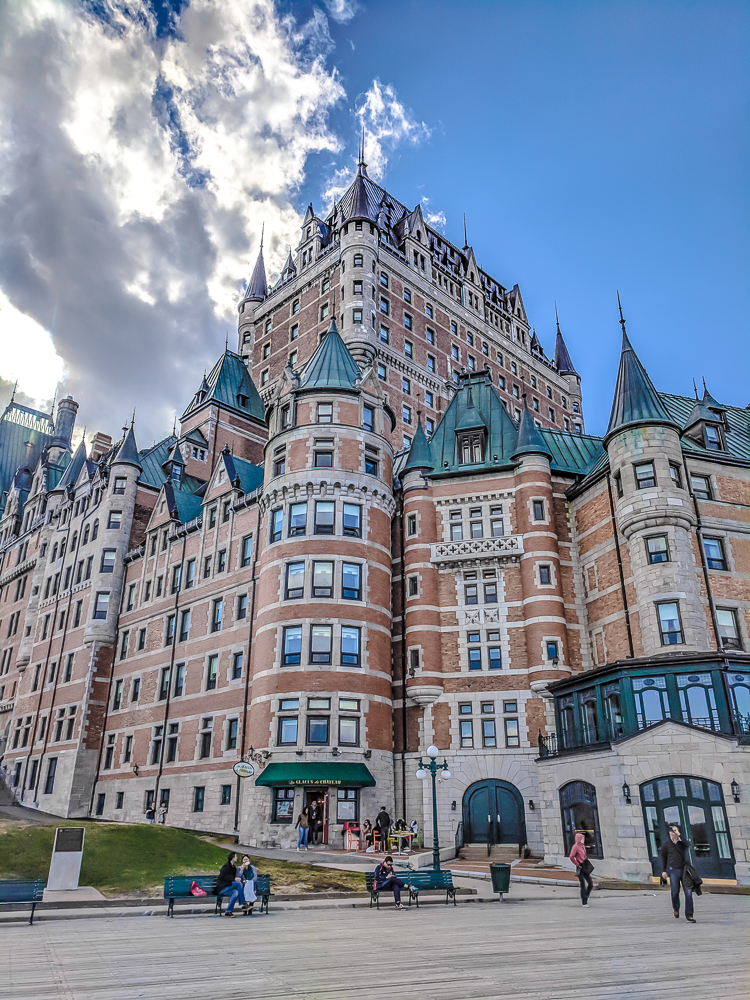
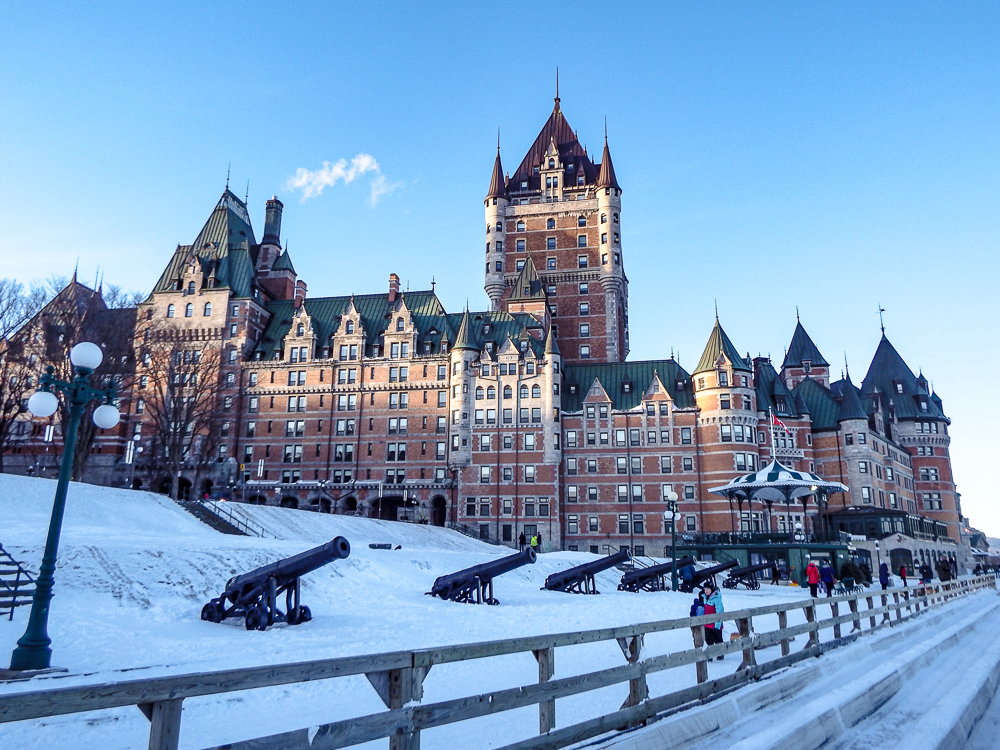
Want another cool hotel option? Check out my experience at Québec’s ice hotel.
2. If you like cathedrals…
If you like larger-than-life cathedrals, you’ll love Québec City. No “Europe within reach” article would be complete without the mention of a mega-church of some sort. And here in Québec, that’s the Our Lady of Québec City – the city’s cathedral-basilica, which is indeed a thing as I’ve just learned. (I love a good BOGO deal.)
The Our Lady of Québec City cathedral-basilica has been located at this site since the year 1647. It has twice been destroyed and rebuilt, each time becoming larger and more magnificent. (The first time due to cannon fire during the English Conquest in 1759; the second by fire in 1922.)
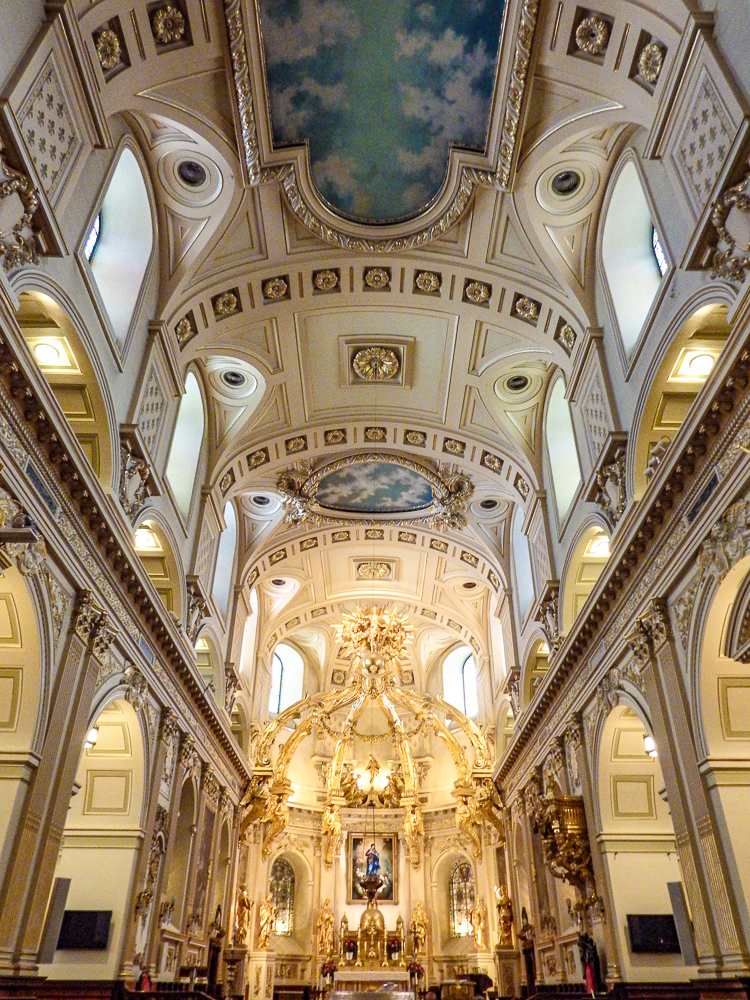
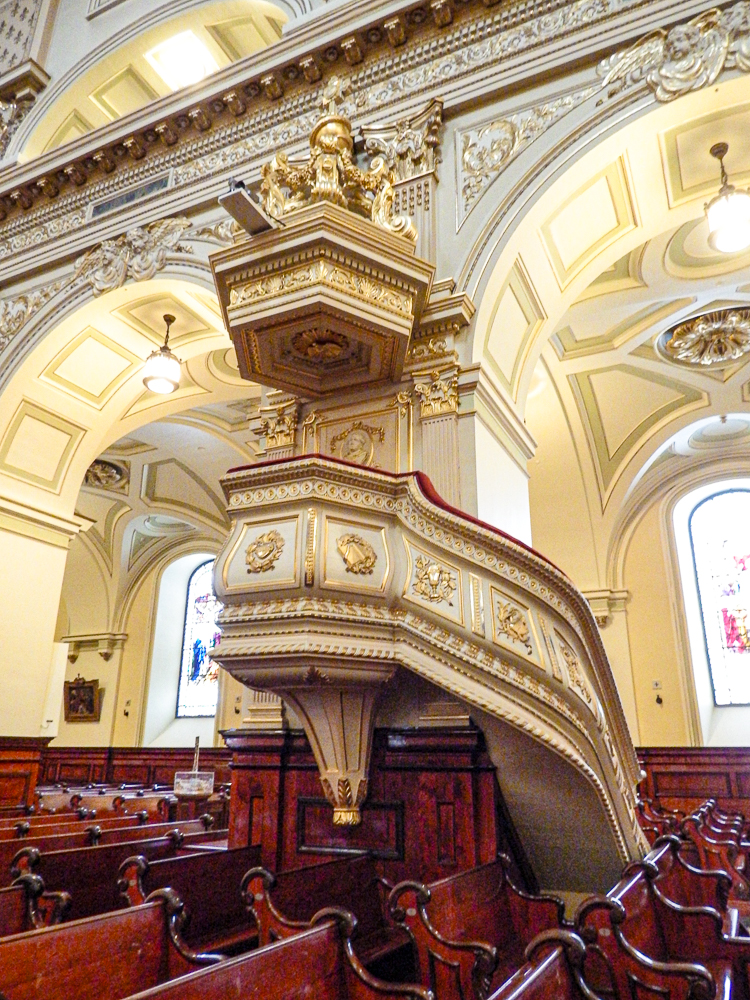
Québec Notre Dame is the oldest parish north of Mexico. In 2014, it celebrated its 350th anniversary and a holy door was constructed in that honor. A holy door is a special door on a basilica that’s cemented shut and only opened every 25 years or so, and only by the Pope.
This is huge in the church world because (at the time) there were only seven holy doors in the world, and this was the only one located outside Europe. As of 2024, there are now 10 holy doors–all in Europe except for this one and one in the Philippines. Here’s the full list.
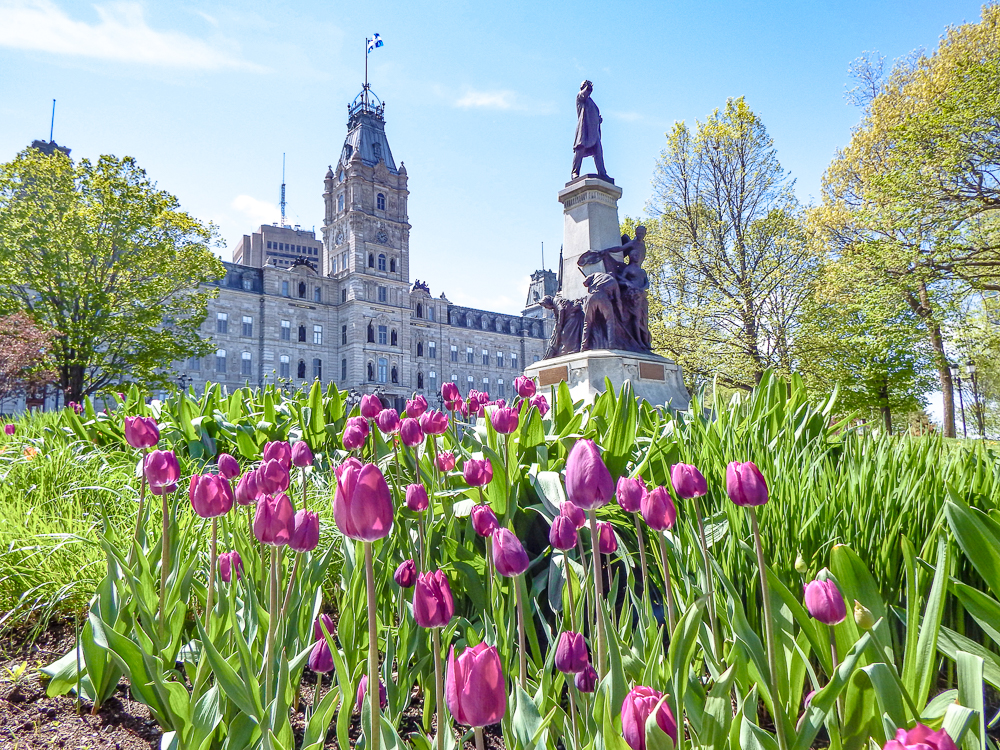
3. If you like grand architecture…
If you like grand architecture, statuary, and beautiful gardens, you’ll love Québec City. Specifically, Parliament Hill, the area around the Parliament Building–home to the National Assembly.
The building itself was built between 1877-1886 and owes its credit to architect Eugène-Étienne Taché. (Ah, that’s better.) It’s the province of Québec’s oldest historical site and the seat of its government. The façade displays 26 bronze statues of important French Canadians and some tributes to the area’s first inhabitants–the Amerindians.
Out front you’ll find a massive garden of indigenous flowers, plants, and 130 types of fruit, vegetables, and herbs. And on the roof, active beehives! All thanks to the collaborative efforts of Université Laval and Les Urbainculteurs. The produce and honey harvested from the Parliament’s gardens are served daily at the restaurant Le Parlementaire.
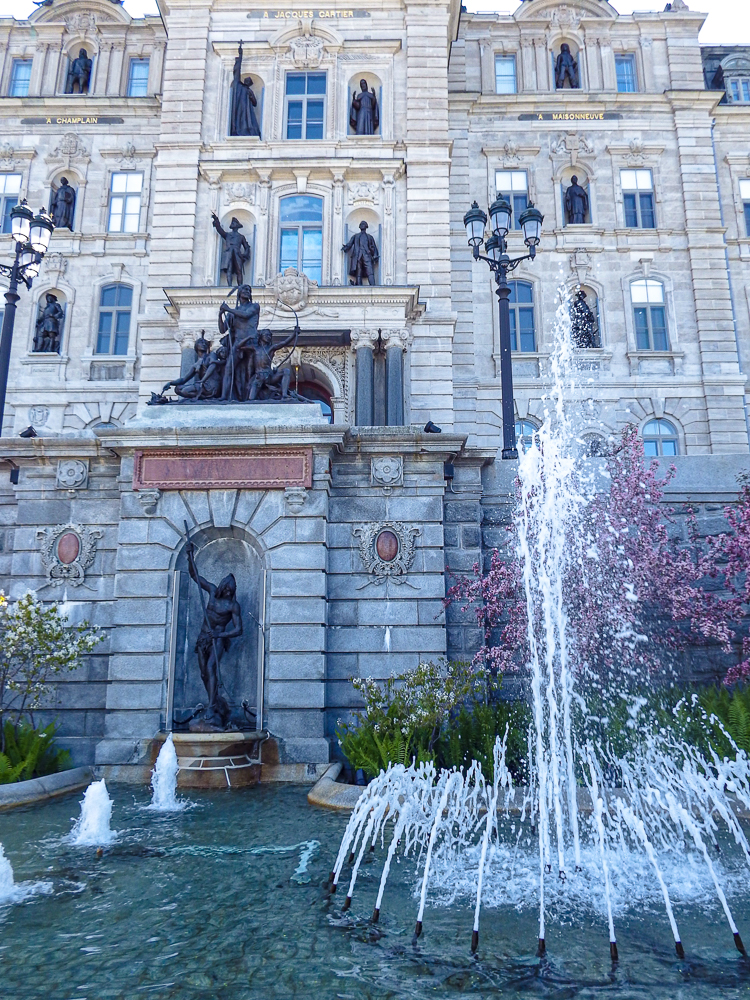

4. If you like quaint shopping districts…
If you like quaint shopping districts, art galleries, and boutique restaurants, you’ll love Québec City. Specifically, the area known as Petit Champlain.
This popular district sits at the bottom of the hill, directly below Château Frontenac. You can access it by either the Escalier Casse-Cou (the “Breakneck Stairs”), or the funicular. The stairs are, as you imagined, super steep and hundreds of years old. Petit Champlain is Québec City’s oldest commercial district and first permanent settlement in North America.
Its streets are lined with small shops of all kinds, art galleries, and restaurants. There’s a really old church, giant murals on the buildings, and absolutely everything you could ever need with a maple leaf on it.
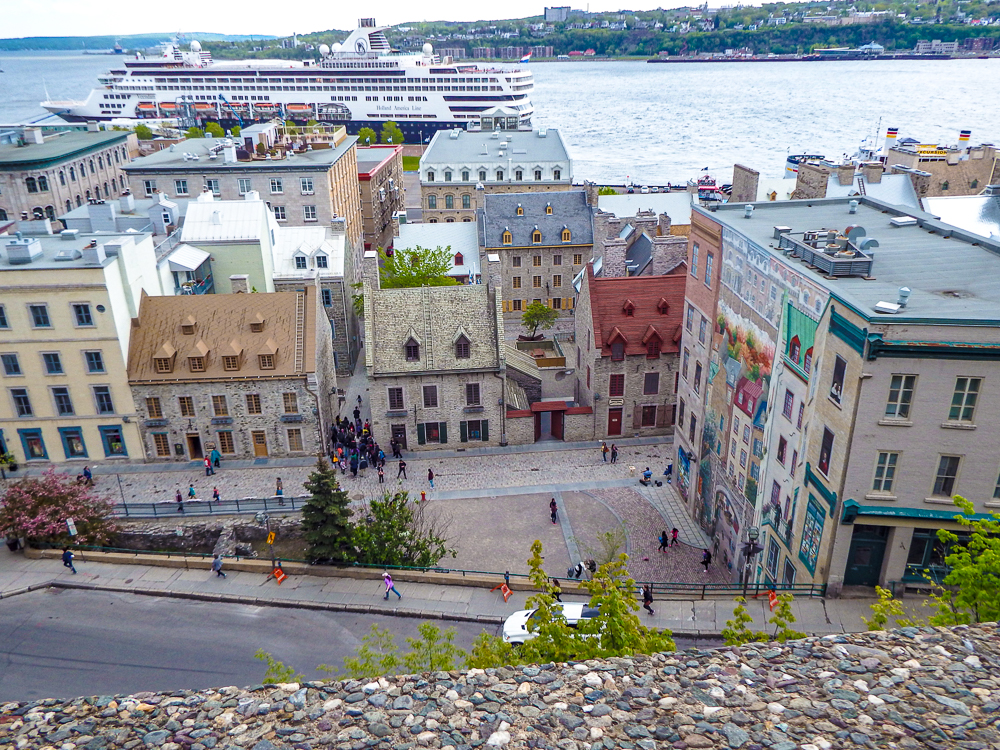

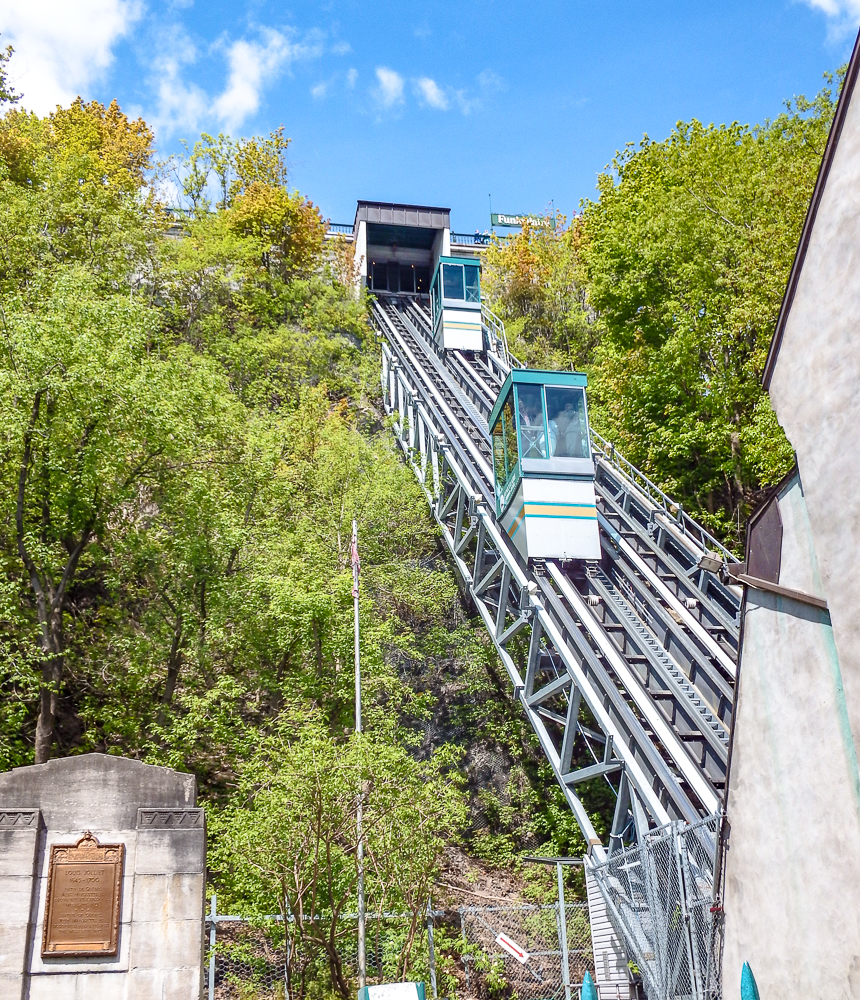
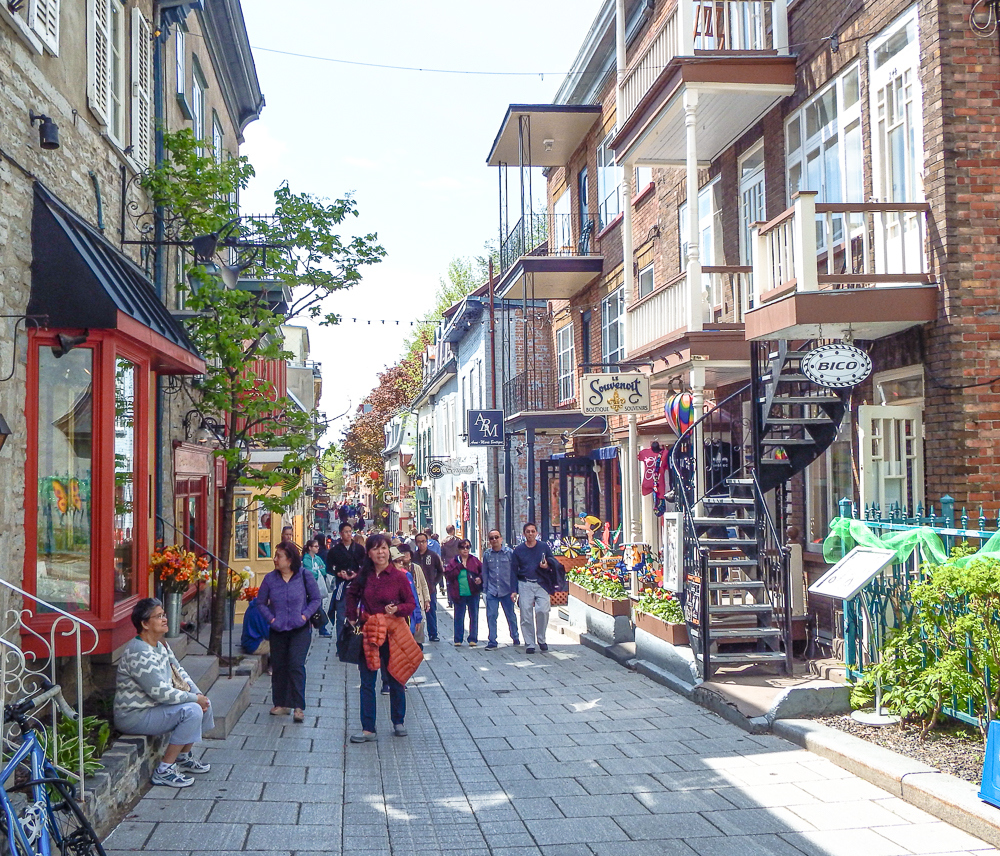
5. If you like history and walled cities…
If you like history and fortified cities surrounded by walls, you’ll love Québec City. Specifically, the Fortifications of Québec–the city’s defense system that was put into place between 1608 – 1871. These are the only remaining fortified city walls in North America. They preserved everything that is good and pure about eastern Canada (ahem, poutine).
Québec City’s fortifications are made up of several smaller parts that include:
- The Citadelle
- Artillery Park and its 3 recreated historical sites
- Walls, gates, and cannons
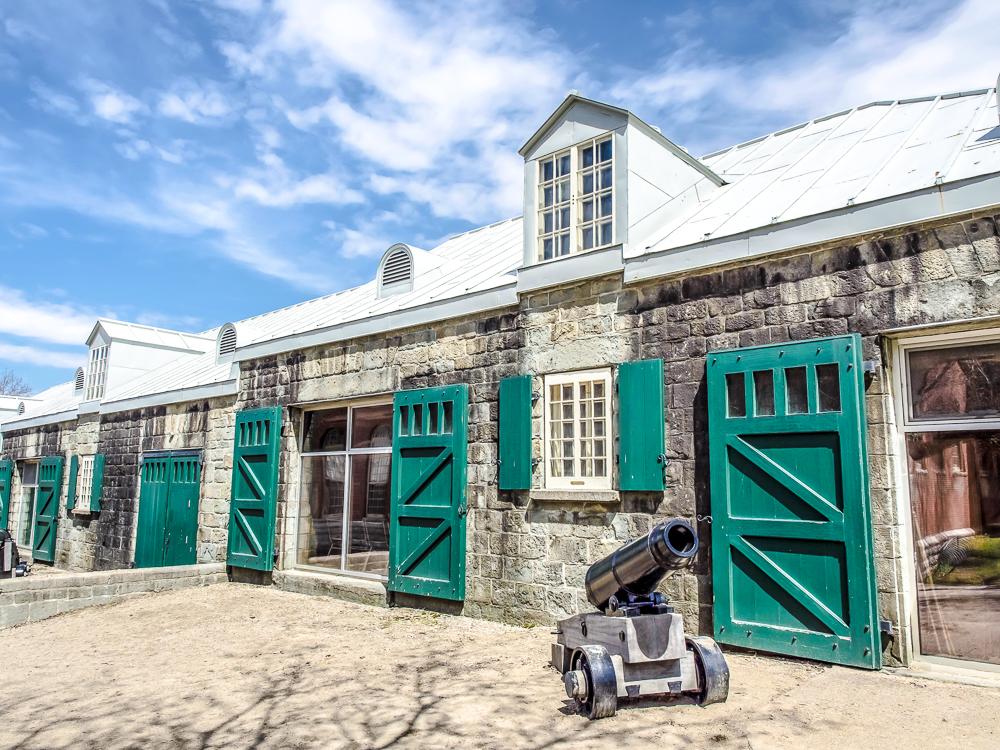
The Citadelle is a National Historic Site and the “largest British fortress in North America.” (Are there more??) Sitting atop the city’s highest point is this star-shaped fortress designed by French engineer Sébastien Le Prestre Vauban. (Though it looks like monsieur Vauban may have had too many Labatt Bleues at the drawing board, eh?)
Québec City’s Citadelle is actually still an active garrison where you can watch the Changing of the Guard ceremony in all its regalia. I guess when you steal the land from someone else, it makes sense you’d be afraid someone would try to take it from you, but I digress.
You can also visit the restored historical buildings, take a guided tour of the fortifications, walk along the walls, check out the many cannons, and much more. See all there is to do here.
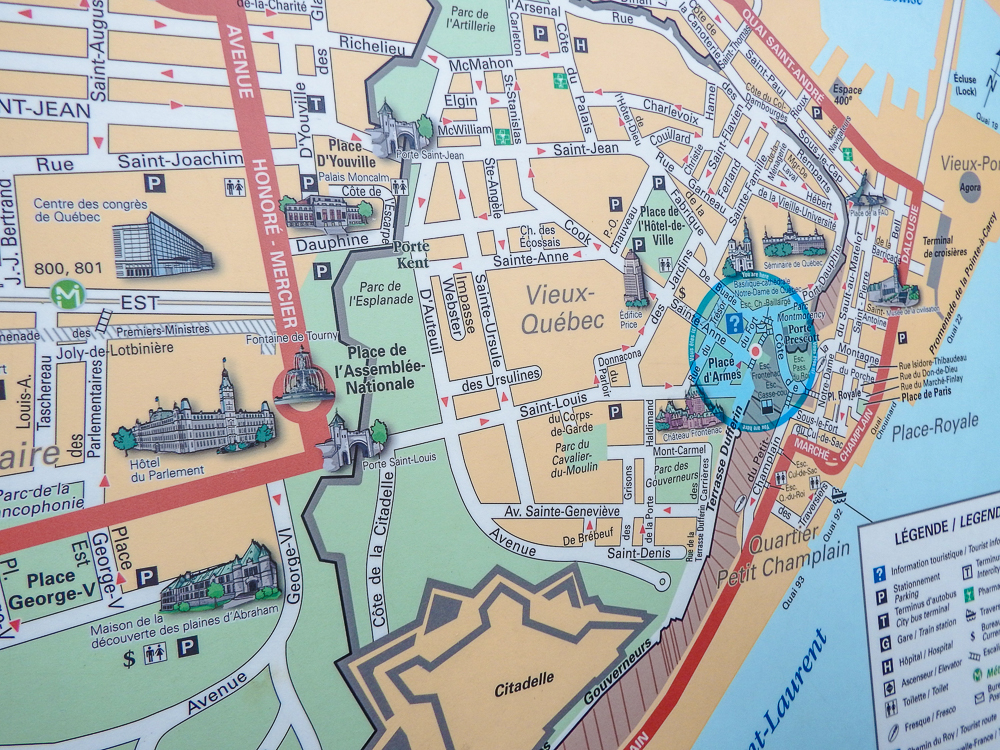
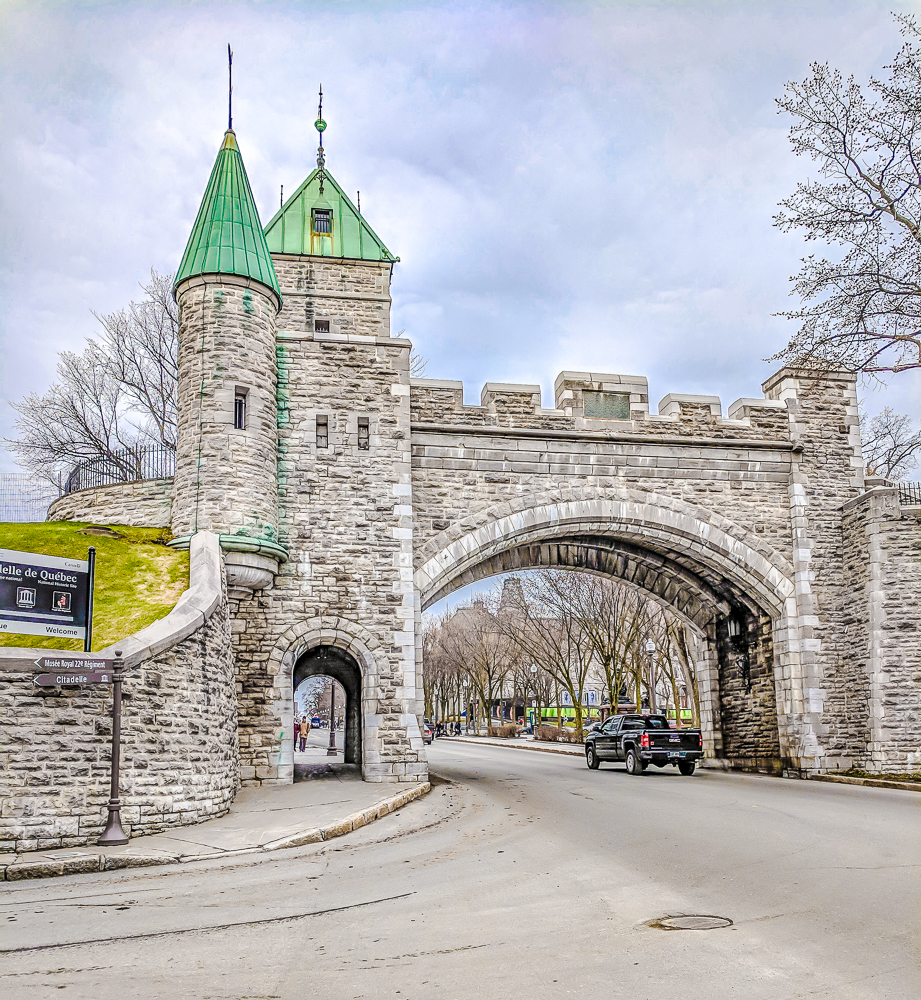
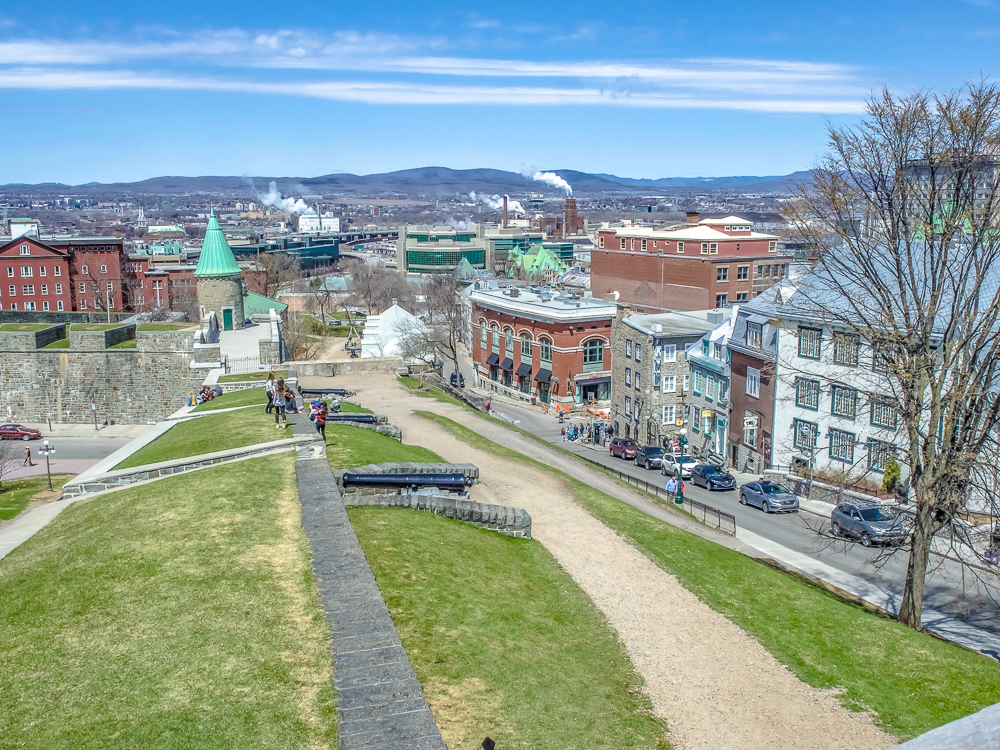
6. If you like French architecture, bars, and shopping…
If you like French architecture, bars and restaurants, and shopping galore, you’ll love Québec City. Specifically, the UNESCO World Heritage Old Town district of Québec.
Old Québec is the heart of the city. It’s where you can drink some excellent beer, do some shopping, eat some poutine, drink some more beer, buy some mittens, maybe move on to some Canadian whiskey, and eventually check out the statues of some French people and ask them, “amipreddygirl? heY! you. doyew thingim preddy?” Really, the possibilities are endless.
You’ll find creperies, pubs, shops that sell medieval clothing and swords, fountains, and streets where artists sell their paintings. But also hills. So many hills. Big, tall ones. Actually, everything mentioned in this post so far has been within the confines of “Old Québec,” but there’s so much more than the historical sites.
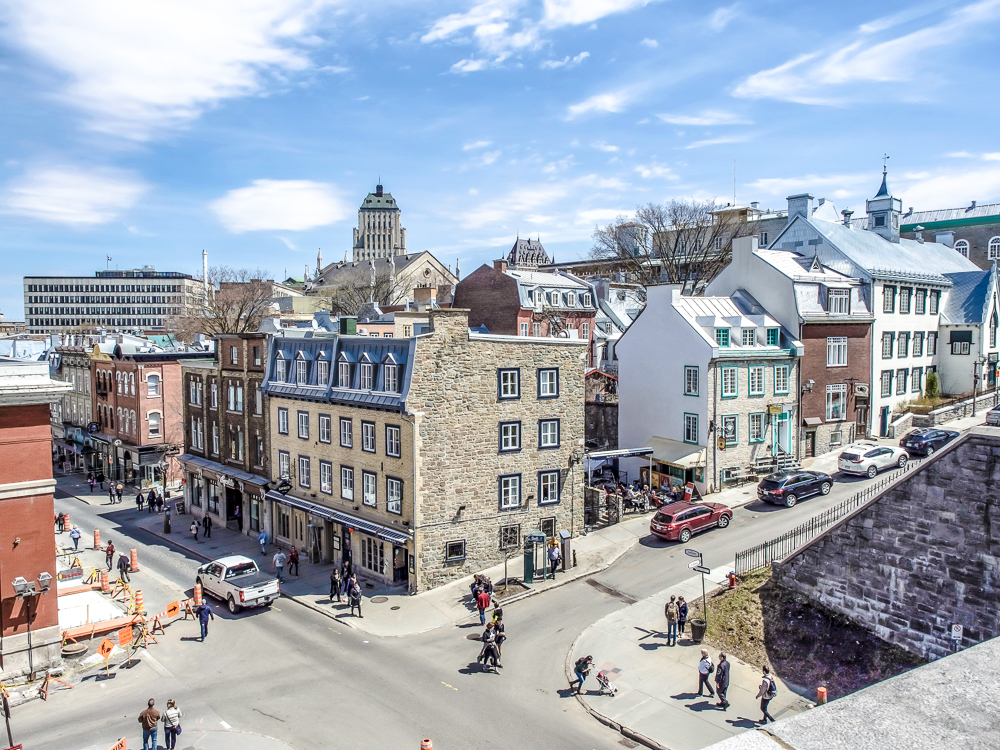


7. If you like nature…
If you like nature, you’ll love Québec City. Specifically, Montmorency Falls–a waterfall that’s 98 feet taller than Niagara Falls. (And 98 times less obnoxious.)
Montmorency Falls is a visitor-friendly waterfall that’s just an easy 15-minute drive from Old Québec. Once here, you can walk across the waterfall via a suspension bridge, which you can get to via cable car or by climbing 487 steps.
When you’re looking to get out of the city for a bit, even if it is an adorable French one, you can take some time out here in the natural areas that surround Montmorency Falls. Here’s all the visitor info you need.

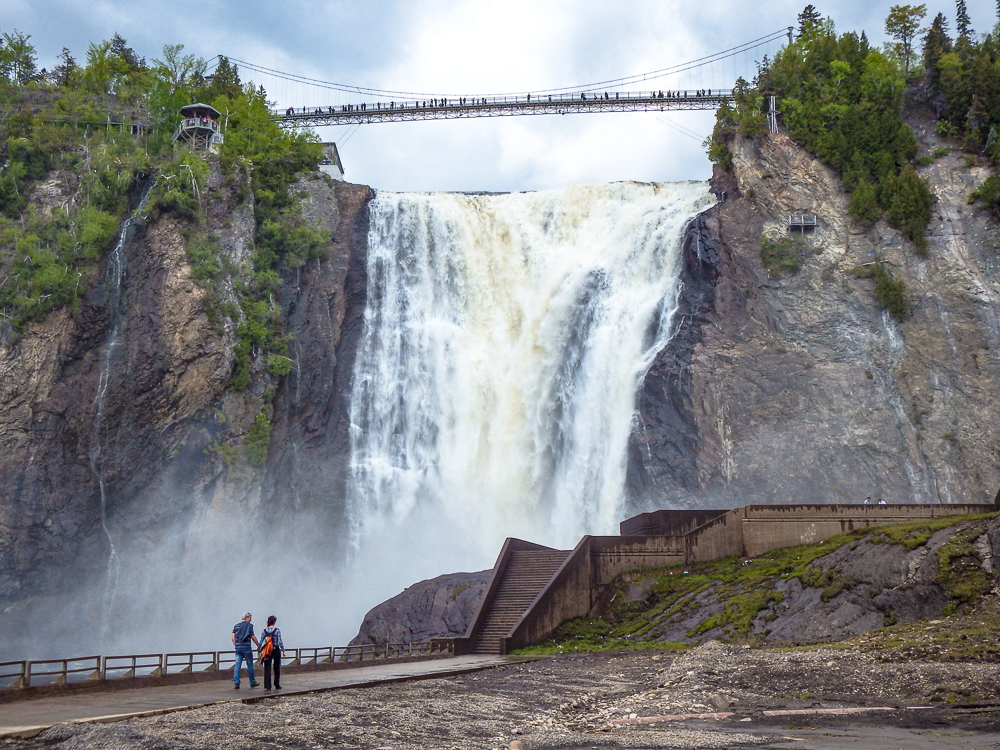
And if you plan to visit in the winter, definitely check out my post on ice canyoning in Québec–where you get to rappel down a frozen waterfall.
8. If you like amazing French food…
If you like unforgettable French cuisine, you’ll love Québec City. Honestly, I’ve spent so much time in France–in Paris, Normandy, the Alps, all over–and the food here in Québec is the best I’ve ever had. No question. (And I’m not only talking about poutine.)
All the popular French staples, Québec City does it better. I promise you. This is hands down one of my favorite foodie cities. And that’s not even including the beer. The whole Québec province has some of the best craft beers around. In my opinion, sure, but I drink a lot of beer so my opinion has to count for something.
For more on this delicious topic, check out my post on the best places to eat and drink in Québec City. (It’s definitely one of my favorite reasons to visit Québec City; and don’t judge that by the fact that I preach how McDonald’s macarons are better than Ladurée.)

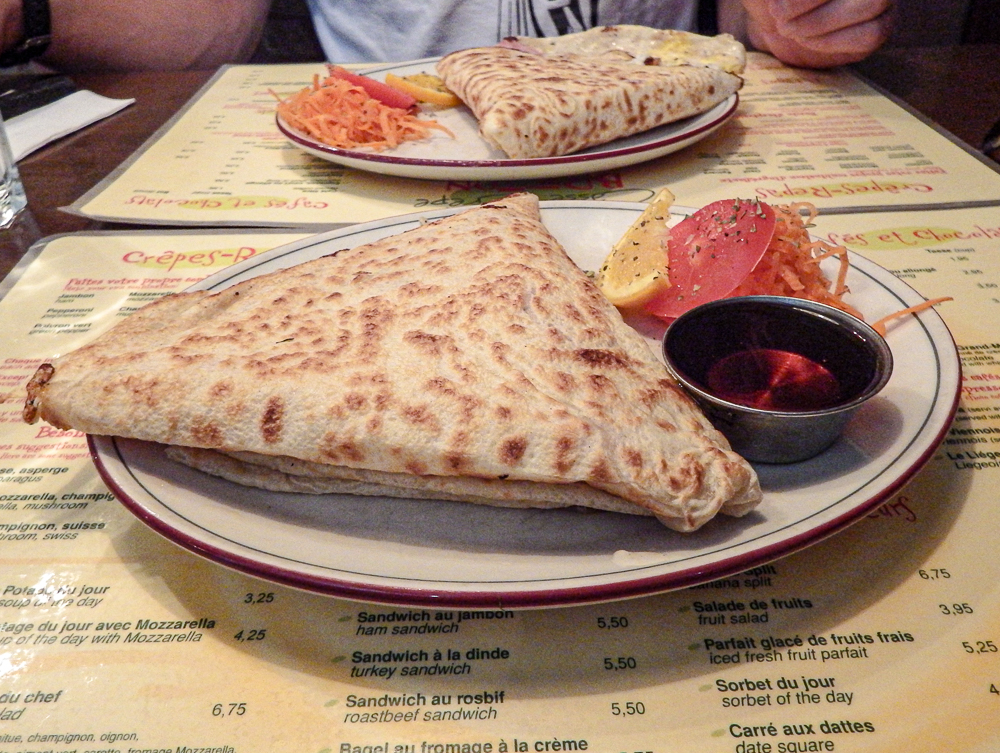
More info for your trip to Québec City
Like this post? Have questions about any of these reasons to visit Québec City? Let me know in the comments below! Have fun in Canada!

Save this info, pin this image:

